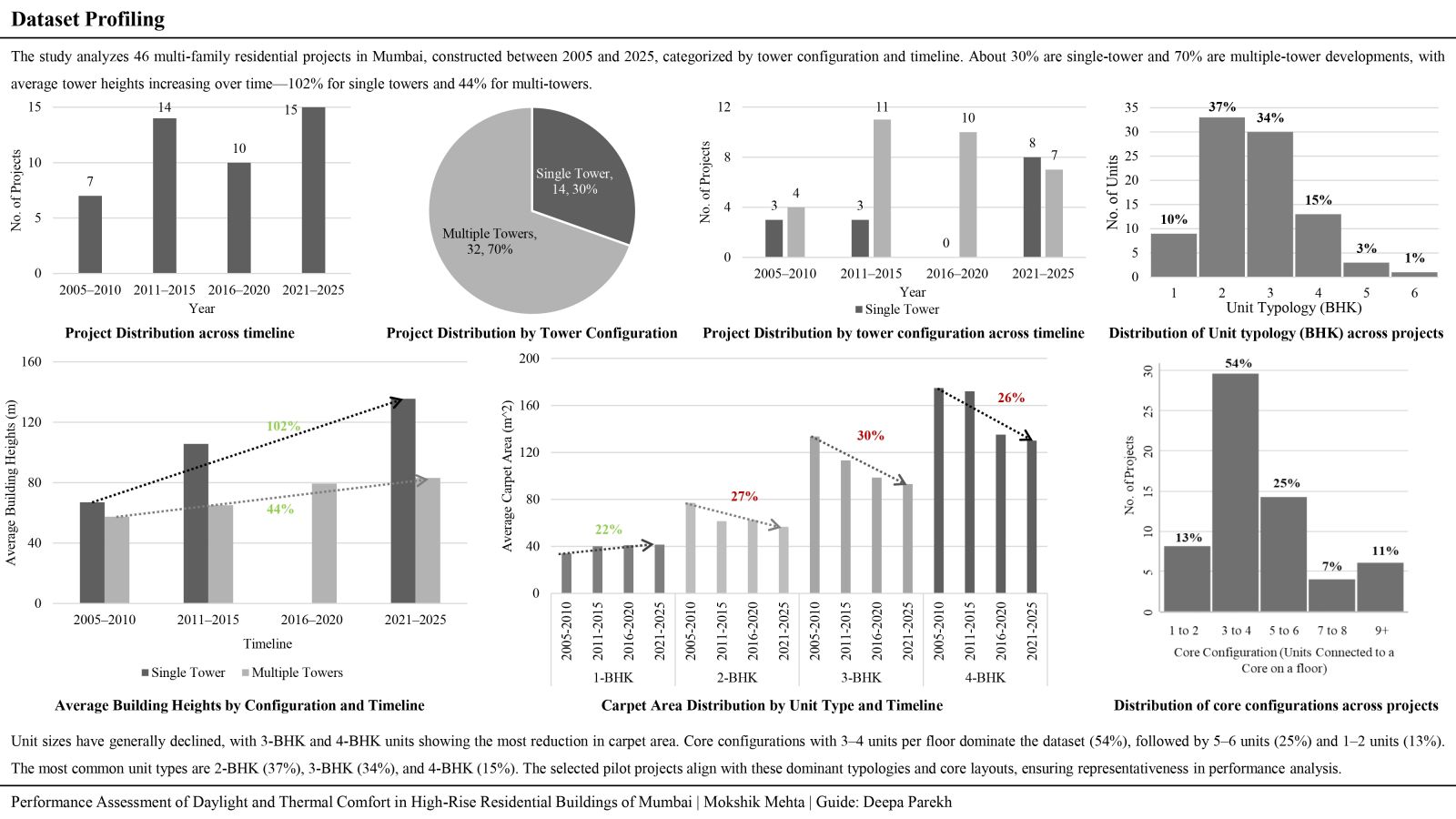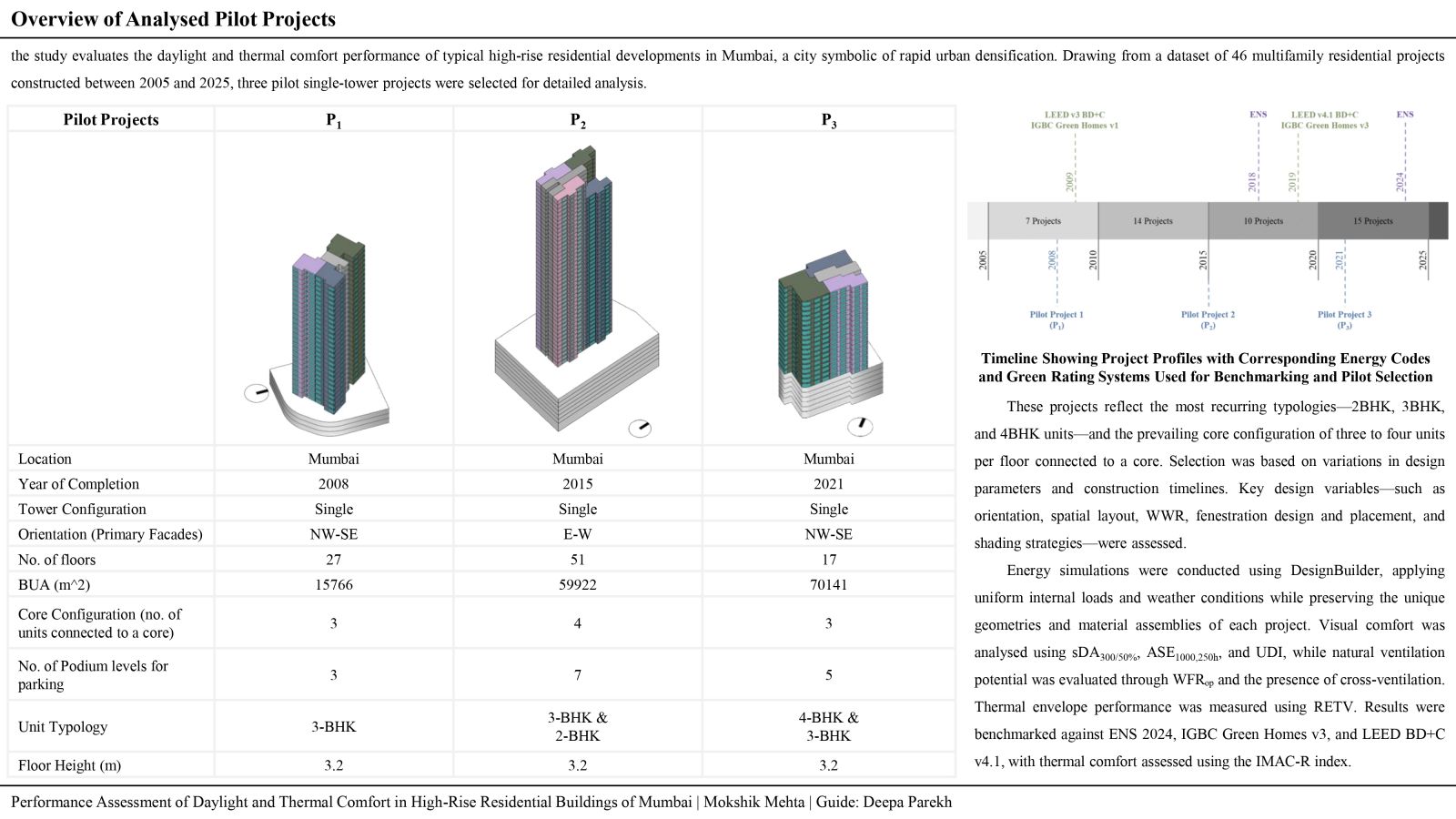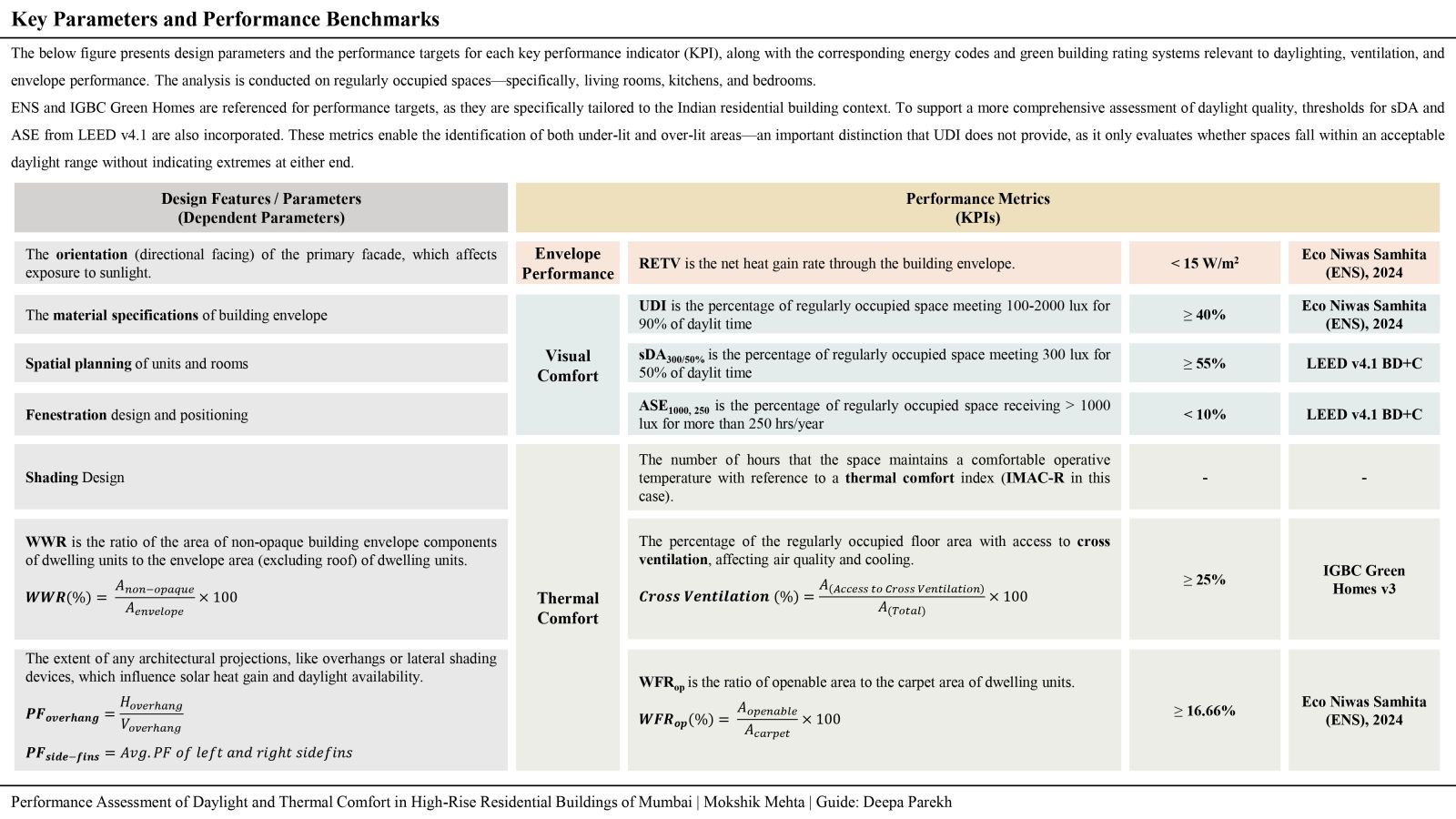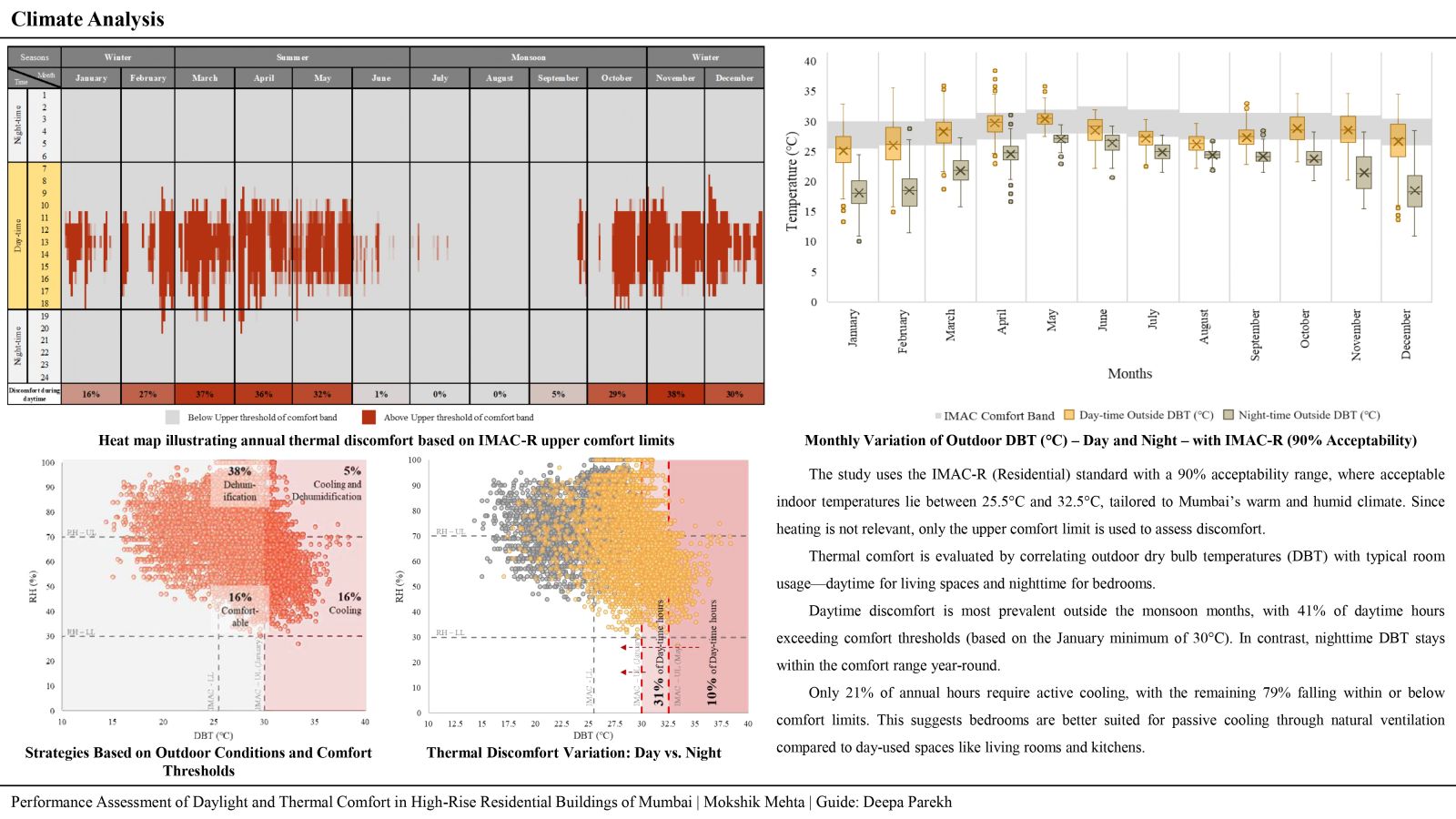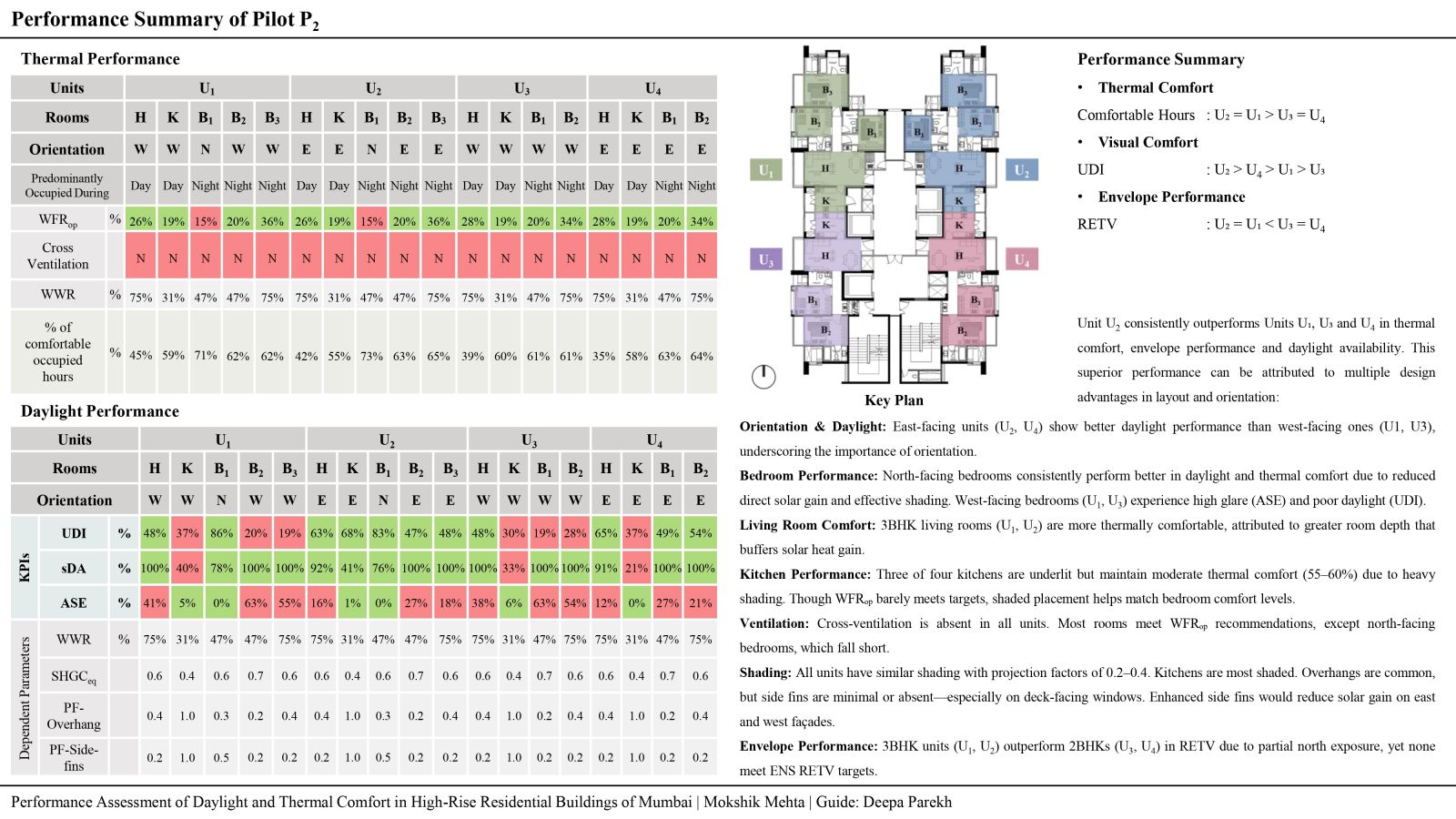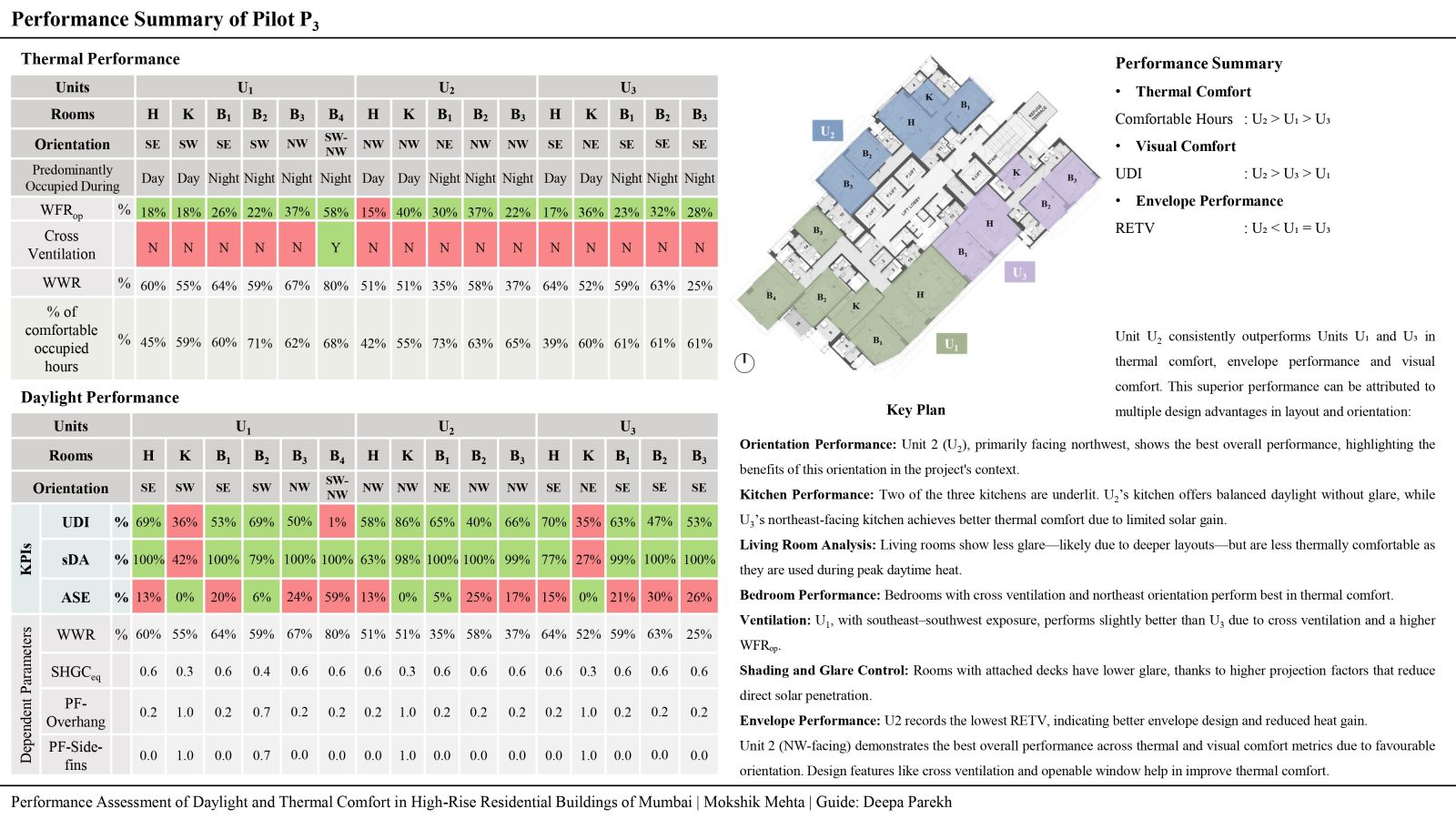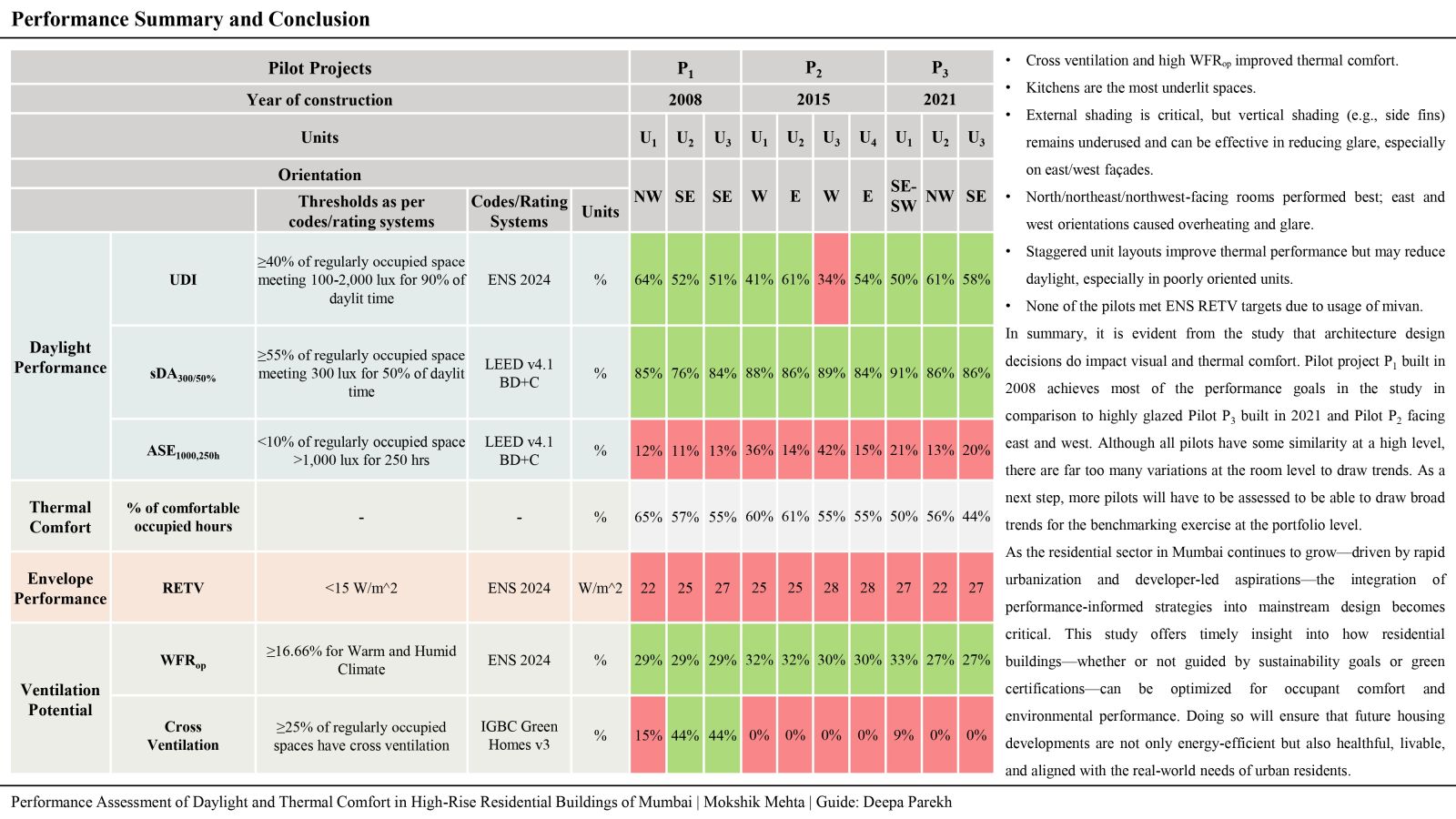Your browser is out-of-date!
For a richer surfing experience on our website, please update your browser. Update my browser now!
For a richer surfing experience on our website, please update your browser. Update my browser now!
This study benchmarks the daylight and thermal comfort performance of high-rise, multi-family residential units in Mumbai's warm-humid climate. Drawing from a dataset of 46 buildings designed over two decades by a leading architectural firm, three representative pilot projects were simulated using standardized loads and climate data. Key design parameters—orientation, layout, WWR, fenestration, and shading—were evaluated using metrics from ENS 2024, IGBC, LEED, and IMAC-R. Findings highlight the critical role of orientation and spatial planning in enhancing comfort passively. The study proposes a benchmarking framework to guide future data-driven, occupant-centric residential design in alignment with emerging energy codes.

